The Blank Course Explores the Expectations Family Members
Great Expectations
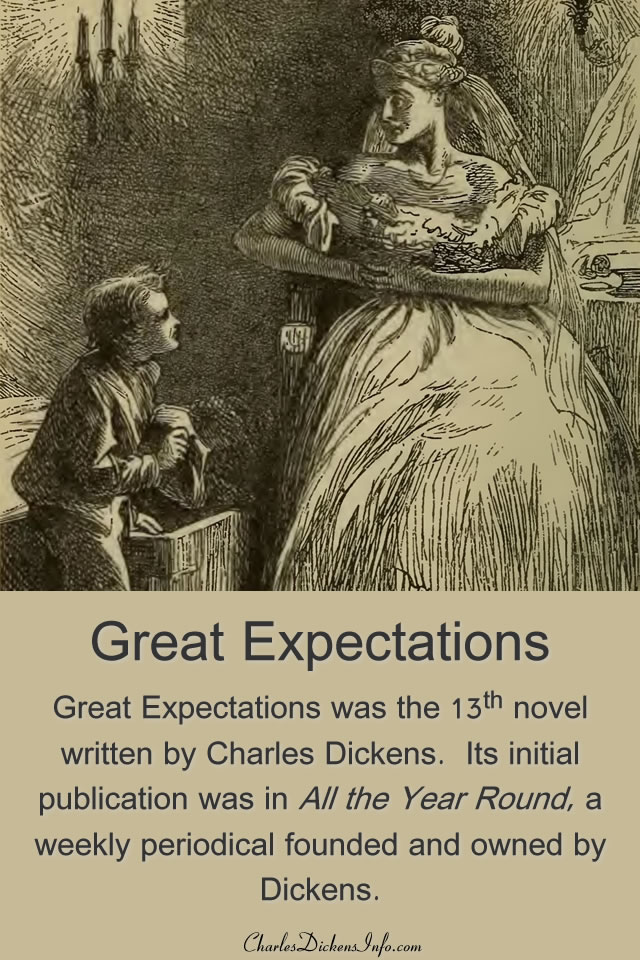
Terminal Updated on September 24, 2021
Slap-up Expectations was the thirteenth novel of Charles Dickens. He began writing information technology in October of 1860. Its initial publication was in All the Year Round, a weekly periodical founded and owned by Charles Dickens.
Great Expectations appeared in All the Year Round for nine monthly installments, from December of 1860 until August 1861.
Tabular array of Contents
- Great Expectations
-
- Keen Expectations – Dickens's Life At The Time
- The Ending
- All the Year Round
- Themes of Great Expectations
- More About Nifty Expectations
- Drove of Quotations from Great Expectations
- Graphic symbol Listing for Great Expectations
- Neat Expectations Quiz
-
Bang-up Expectations – Dickens's Life At The Fourth dimension
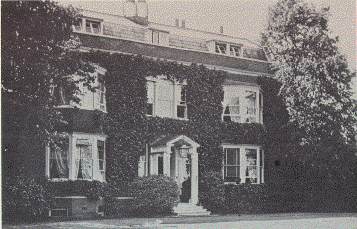
Gad's Hill Identify
In September of 1860 Gad's Hill Identify became Dickens' permanent residence.
Dickens and Wilkie Collins traveled to North Devon on November of 1860 to get together materials for A Message from the Sea.
Dickens began a serial of readings at St. James's Hall in March of 1861. In October of that year Dickens began some other series of readings.
The Ending
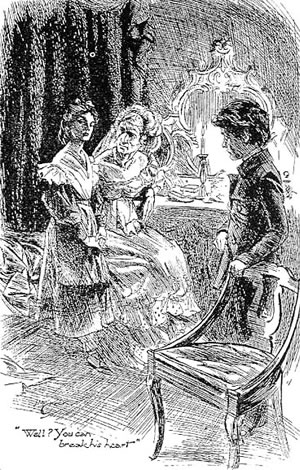
Miss Havisham with Estella and Pip
Originally Dickens planned a different ending for Great Expectations. However, he was persuaded past his friend, Bulwer-Lytton, to modify the ending to a happier one.
The original catastrophe had Estella remarrying after the decease of her get-go hubby. She and Pip had a brief meeting in London and and so parted forever. The rewritten ending hints at a reconciliation for Pip and Estella:
I took her hand in mine, and we went out of the ruined identify; and, every bit the morning mists had risen long ago when I first left the forge, so, the evening mists were ascension now, and in all the broad area of tranquil lite they showed to me, I saw no shadow of another parting from her.
All the Year Round
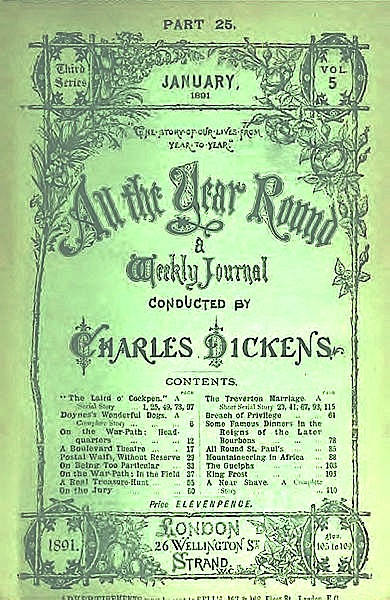
All the Yr Round – Cover of January 1891 issue
Charles Dickens founded the weekly publication All the Year Round. Its first consequence was printed on April 30, 1859. Dickens served as editor and publisher. One feature of the publication was its serialization of novels. The start novel serialized in All the Year Round was A Tale of 2 Cities.
In Oct of 1860 sales of All the Year Round were dropping because the featured novel, A Twenty-four hours's Ride by Charles Lever, wasn't very popular. Dickens was originally going to have Great Expectations published in another format, nevertheless, to increase sales of All the Yr Round he adjusted information technology to the weekly format. His plan worked and sales for the publication increased.
At the fourth dimension of Dickens'south decease, in 1870, the apportionment of the publication was 300,000.
Charles Dickens Jr. edited the magazine after his father'southward death. The last issue of All the Year Round was published in March of 1895.
Themes of Great Expectations
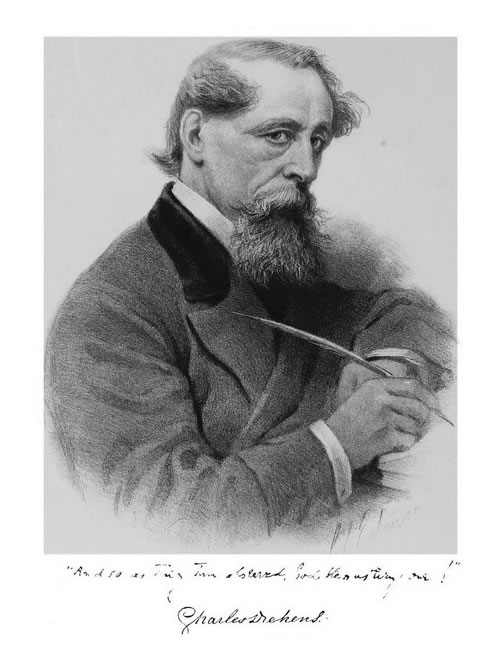
Charles Dickens (epitome past Sol Eytinge, Jr.)
Equally a kid, Charles Dickens wanted to an education and to become a gentleman. The odds were not in his favor as his family constantly struggled with finances.
Pip, similar Dickens himself, dreams of condign a admirer.
However, during the novel, Pip comes to realize that there is more to life than wealth and station.
Pip is raised by his sis and her husband, Joe. Joe is an honest, hard-working man. As Pip ascends in gild, he is embarrassed past Joe and his simple ways.
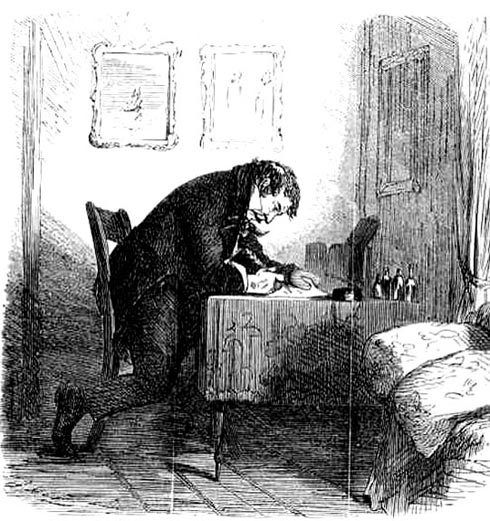
Joe learning to read, image by John McLenan
Another instance of this theme is Pip's relationship with Magwitch. Initially, Pip is horrified to learn that his benefactor is not Miss Havisham, but instead Magwitch the convict.
At the end of the novel, Pip has different feelings toward Magwitch. He is very fond of him and is at his side when he dies.
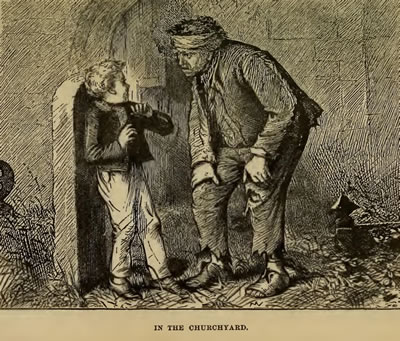
Magwitch and immature Pip
Magwitch himself experiences how highly social club values the advent of gentility. Here Magwitch describes how differently he and his partner in criminal offense, the supposed admirer Compeyson, are treated during their trial:
"And when information technology come to character, warn't information technology Compeyson as had been to the school, and warn't it his schoolfellows as was in this position and in that, and warn't information technology him as had been know'd by witnesses in such clubs and societies, and nowt to his disadvantage? And warn't it me as had been tried afore, and every bit had been know'd up hill and downwards dale in Bridewells and Lock-Ups? And when it come up to speech-making, warn't it Compeyson as could speak to 'em wi' his face dropping every now and then into his white pocket-handkercher – ah! and wi' verses in his speech, too – and warn't it me as could just say, 'Gentlemen, this homo at my side is a nigh precious rascal'? And when the verdict come up, warn't it Compeyson as was recommended to mercy on account of good character and bad visitor, and giving up all the information he could agen me, and warn't it me as got never a discussion but Guilty?"
Another theme that runs through Great Expectations, as information technology does through Our Mutual Friend, is the ease with which wealth can corrupt people. Pip describes his spending habits:
We spent equally much money as we could, and got every bit little for it every bit people could make up their minds to give us. We were always more than or less miserable, and most of our acquaintance were in the same status. At that place was a gay fiction amid us that we were constantly enjoying ourselves, and a skeleton truth that we never did. To the best of my belief, our case was in the last aspect a rather mutual one.
In the end, Pip, like Estella, has undergone some serious interior transformations. Estella states:
"Suffering has been stronger than all other didactics, and has taught me to empathize what your heart used to be. I have been aptitude and broken, but – I hope – into a meliorate shape."
![]()
kittlesonlathand74.blogspot.com
Source: https://www.charlesdickensinfo.com/novels/great-expectations/
0 Response to "The Blank Course Explores the Expectations Family Members"
Post a Comment